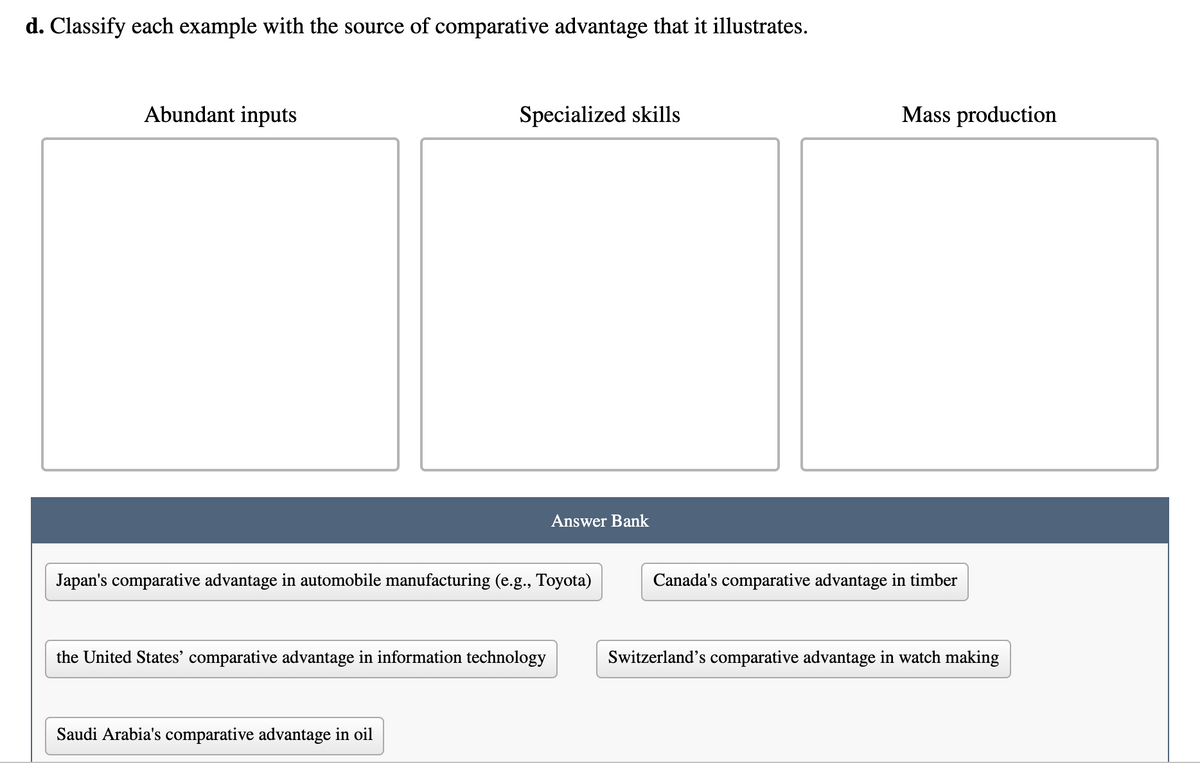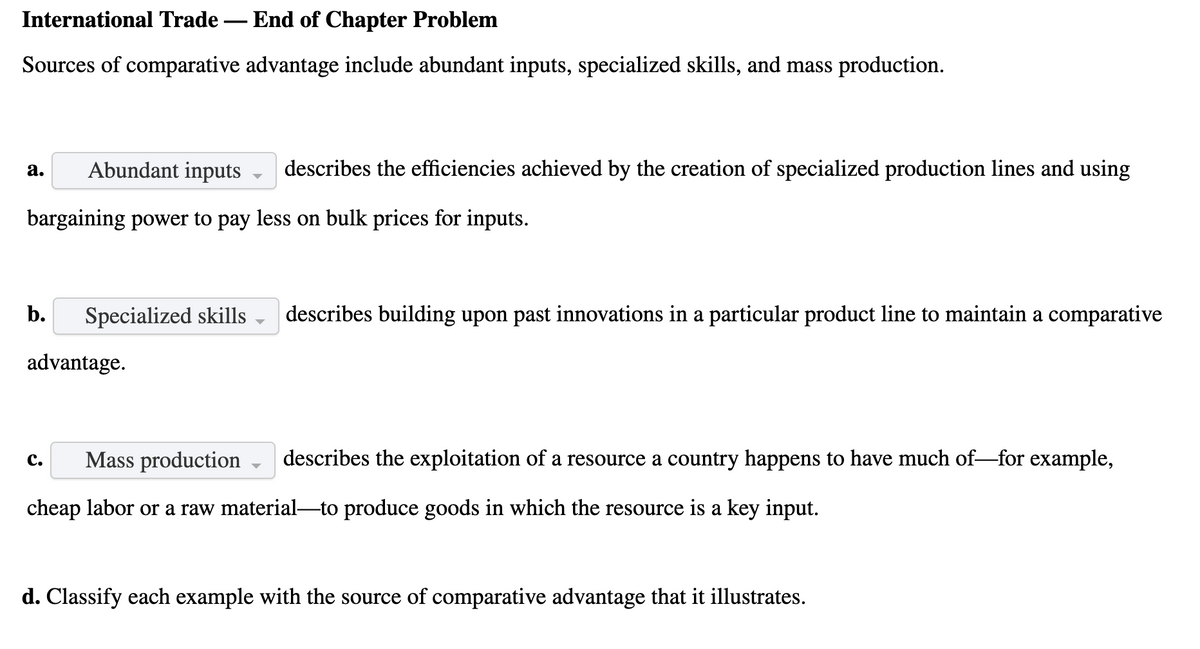Abundant inputs Specialized skills Mass production Answer Bank Japan's comparative advantage in automobile manufacturing (e.g., Toyota) Canada's comparative advantage in timber the United States' comparative advantage in information technology Switzerland's comparative advantage in watch making Saudi Arabia's comparative advantage in oil
Abundant inputs Specialized skills Mass production Answer Bank Japan's comparative advantage in automobile manufacturing (e.g., Toyota) Canada's comparative advantage in timber the United States' comparative advantage in information technology Switzerland's comparative advantage in watch making Saudi Arabia's comparative advantage in oil
Principles of Macroeconomics (MindTap Course List)
8th Edition
ISBN:9781305971509
Author:N. Gregory Mankiw
Publisher:N. Gregory Mankiw
Chapter9: Application: International Trade
Section: Chapter Questions
Problem 1CQQ
Related questions
Question

Transcribed Image Text:d. Classify each example with the source of comparative advantage that it illustrates.
Abundant inputs
Specialized skills
Mass production
Answer Bank
Japan's comparative advantage in automobile manufacturing (e.g., Toyota)
Canada's comparative advantage in timber
the United States' comparative advantage in information technology
Switzerland's comparative advantage in watch making
Saudi Arabia's comparative advantage in oil

Transcribed Image Text:International Trade – End of Chapter Problem
Sources of comparative advantage include abundant inputs, specialized skills, and mass production.
Abundant inputs
describes the efficiencies achieved by the creation of specialized production lines and using
а.
bargaining power to pay less on bulk prices for inputs.
b.
Specialized skills
describes building upon past innovations in a particular product line to maintain a comparative
advantage.
Mass production
describes the exploitation of a resource a country happens to have much of-for example,
с.
cheap labor or a raw material-to produce goods in which the resource is a key input.
d. Classify each example with the source of comparative advantage that it illustrates.
Expert Solution
This question has been solved!
Explore an expertly crafted, step-by-step solution for a thorough understanding of key concepts.
This is a popular solution!
Trending now
This is a popular solution!
Step by step
Solved in 2 steps

Knowledge Booster
Learn more about
Need a deep-dive on the concept behind this application? Look no further. Learn more about this topic, economics and related others by exploring similar questions and additional content below.Recommended textbooks for you

Principles of Macroeconomics (MindTap Course List)
Economics
ISBN:
9781305971509
Author:
N. Gregory Mankiw
Publisher:
Cengage Learning



Principles of Macroeconomics (MindTap Course List)
Economics
ISBN:
9781305971509
Author:
N. Gregory Mankiw
Publisher:
Cengage Learning




Economics (MindTap Course List)
Economics
ISBN:
9781337617383
Author:
Roger A. Arnold
Publisher:
Cengage Learning
